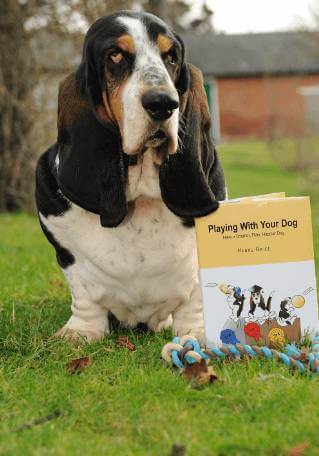Five words that sum up an owner’s frustration about their dog’s problem behaviour. Five words I have heard so often if they were airmiles I would be heading to the States right now. Five words that also make me twitch…
Can unwanted behaviour be ‘nipped in the bud’?
In some cases, yes. Managing your dog’s environment can prevent many problems, such as two Rottweilers I visited who had lived harmoniously but were now fighting in the lounge. At the consultation I noticed a bird feeder close to the patio doors, client questioning revealed this was a fairly new purchase and was popular with the local squirrel community. Based on the dogs’ previous history – and – taking everything into account, probable diagnosis was redirected aggression as the dogs were unable to ‘get’ to the squirrels munching the other side of the doors. Moving the bird feeder stopped all fighting.
What about one of the most common issues I am contacted about: dogs that are reactive towards others on a walk?
One way to nip this in the bud would be to join the Mid-night Walkers Club: those who walk in the dead of night to avoid everyone else. Whilst this manages the problem it fails to address the underlying cause. This is where training and behaviour modification plays a key role. Changing a reactive dog’s association that other dogs are ‘bad’ to other dogs are ‘OK’ relies on a process of counter-conditioning coupled with desensitisation.
As Dr Karen Overall explains “this means one must constantly go back and repeat the exercises where there was a lesser response until there is none, and it means that one must attend to all the patient’s communicatory signals. It is hard work, but it does work.”
It is for this reason I twitch when I hear the words “I want to nip it in the bud” because this technique is time-consuming. It requires owner compliance and understanding to work at their dog’s pace. Work too quickly and this can provoke anxiety. For example, if an owner whose dog has been diagnosed with a separation-related problem and whips through a counter-conditioning and desensitisation programme too quickly, leaving that dog alone for ‘just’ 5 minutes can sabotage the programme. That is because it may have pushed the level of challenge beyond that dog’s ability to cope.
There are numerous factors that influence dog behaviour – and various ways to tackle unwanted stuff. Nevertheless, management always goes hand in hand with training and behaviour modification. Our duty as good pet parents is to understand that unwanted behaviour may not always be nipped in the bud and that changing behaviour requires consistency, practice and a bucket load of patience!
References
Overall, K. ‘Understanding How Dogs Learn: Importance in Training and Behavior Modification’, presentation, How Dogs Learn, World Congress, delivered 11th October 2006.
Learn more about our classes

Get Hanne's book, clothing and more
Hanne has a number of publications including her book Playing With Your Dog to help owners work out the games that are best suited for their pet to play throughout his life, from puppyhood to old age, available from Amazon. Check out Hanne's range of contemporary casuals The Collection – for pet lovers made from recyclable, organic materials that are sustainably sourced.

